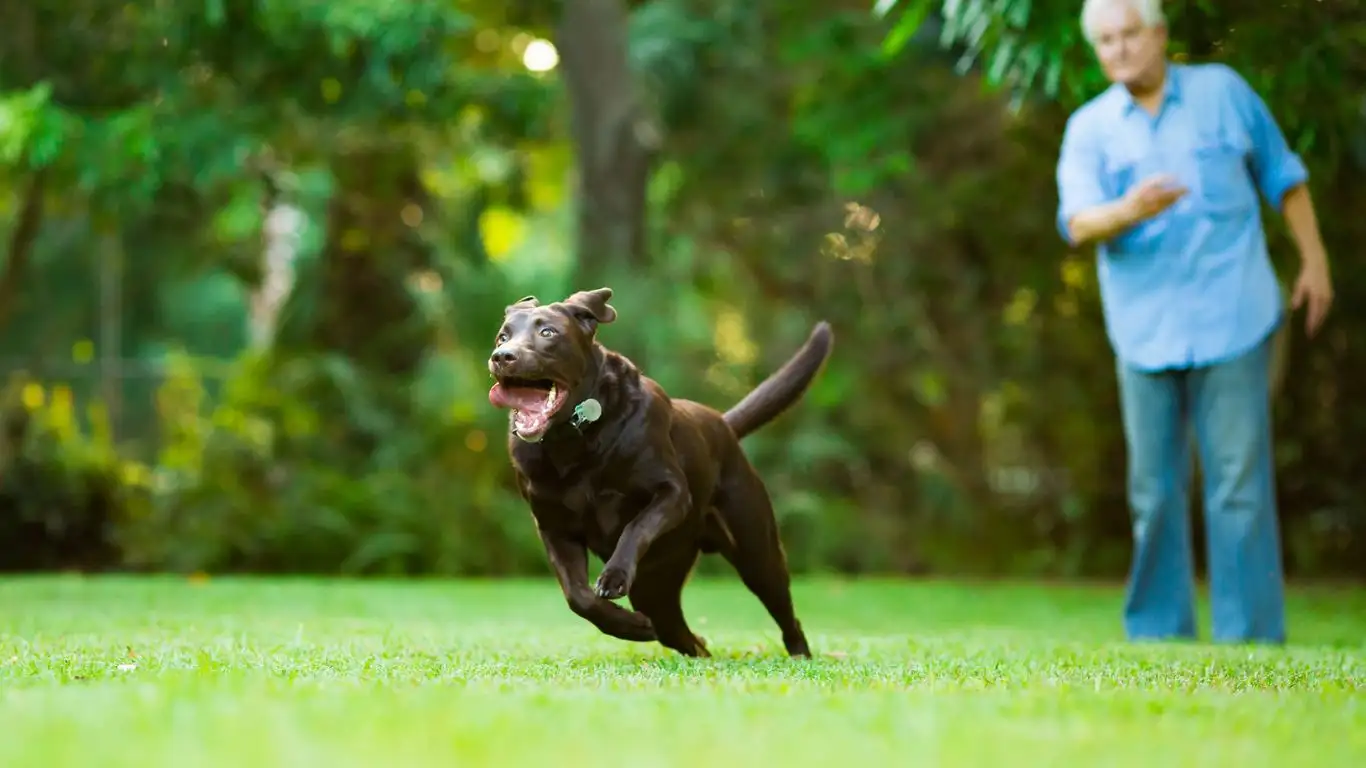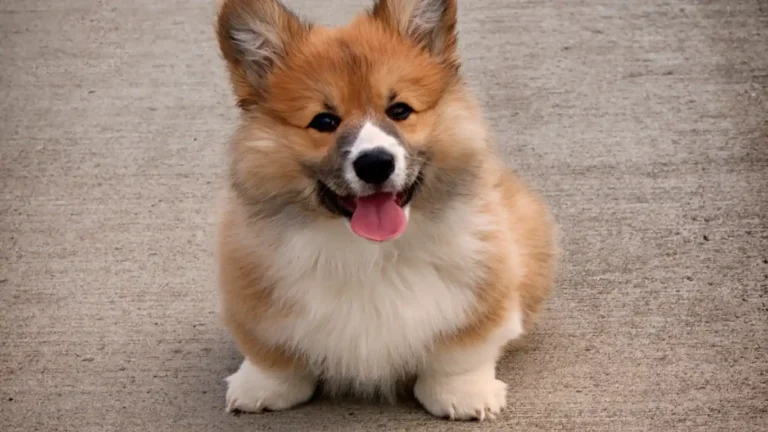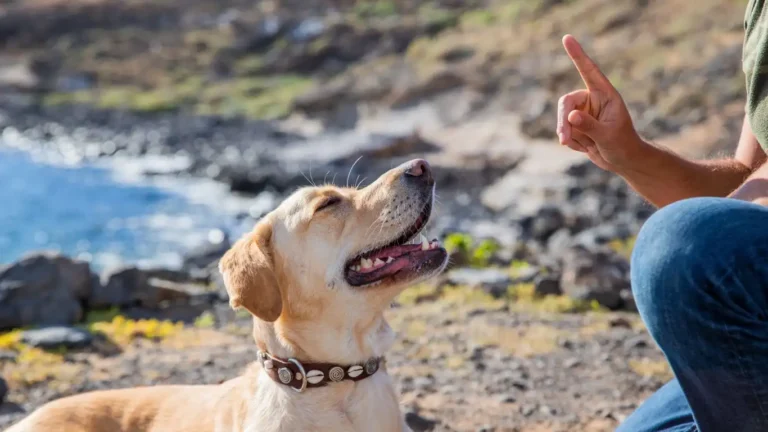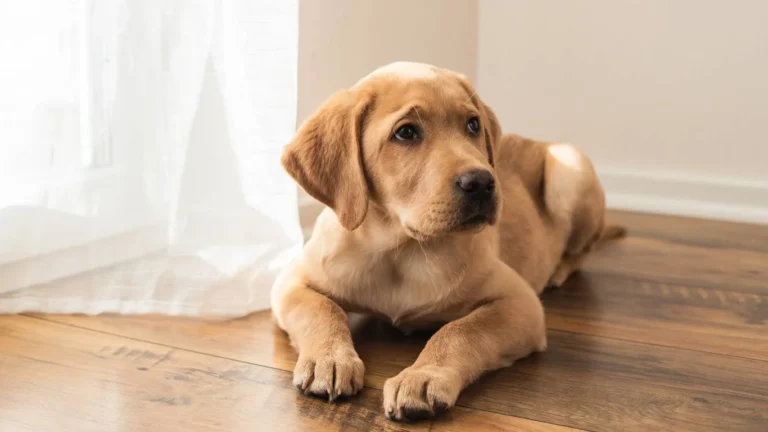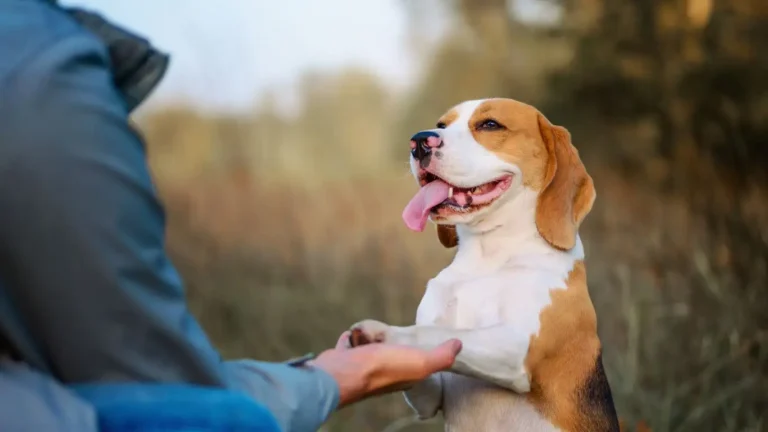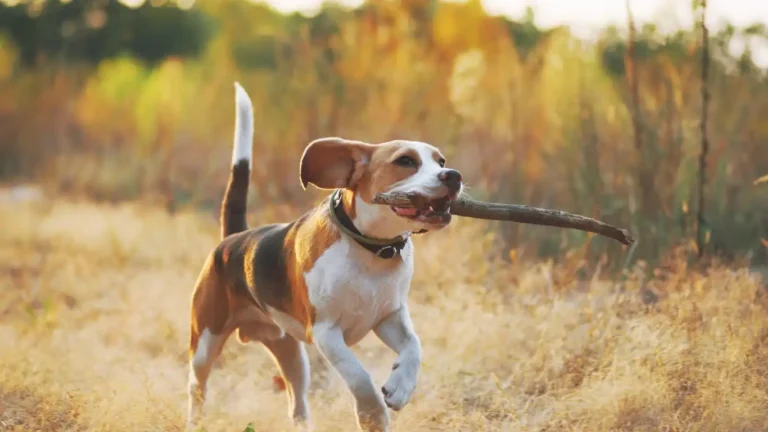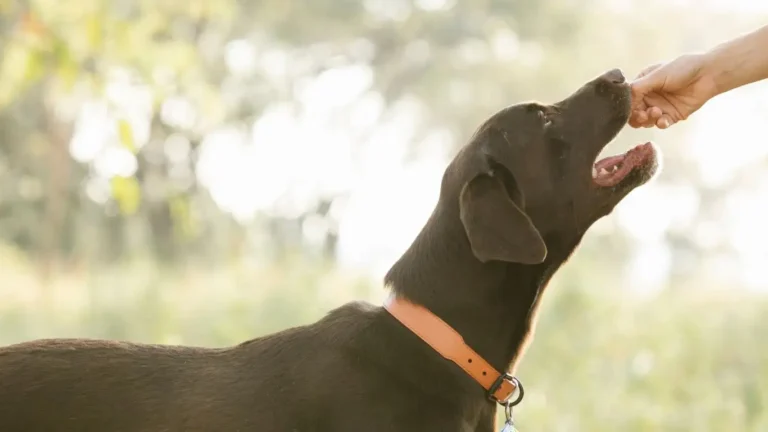Stop Your Dog from Eating Trash on Walks – Proven Training Methods!
Ever been in the middle of a peaceful walk, only to find your dog nose-deep in a pile of who-knows-what? If you’re nodding right now, you’re not alone! Figuring out how to train a dog to stop eating trash on walks is something I’ve worked on with countless dog owners. It’s frustrating, a little gross, and honestly—potentially dangerous for your pup. But don’t worry! I’ll walk you through proven training techniques, plus some of my own go-to tricks as a professional dog trainer, to help your pup learn that street snacks are off-limits.
Why Do Dogs Eat Trash in the First Place?
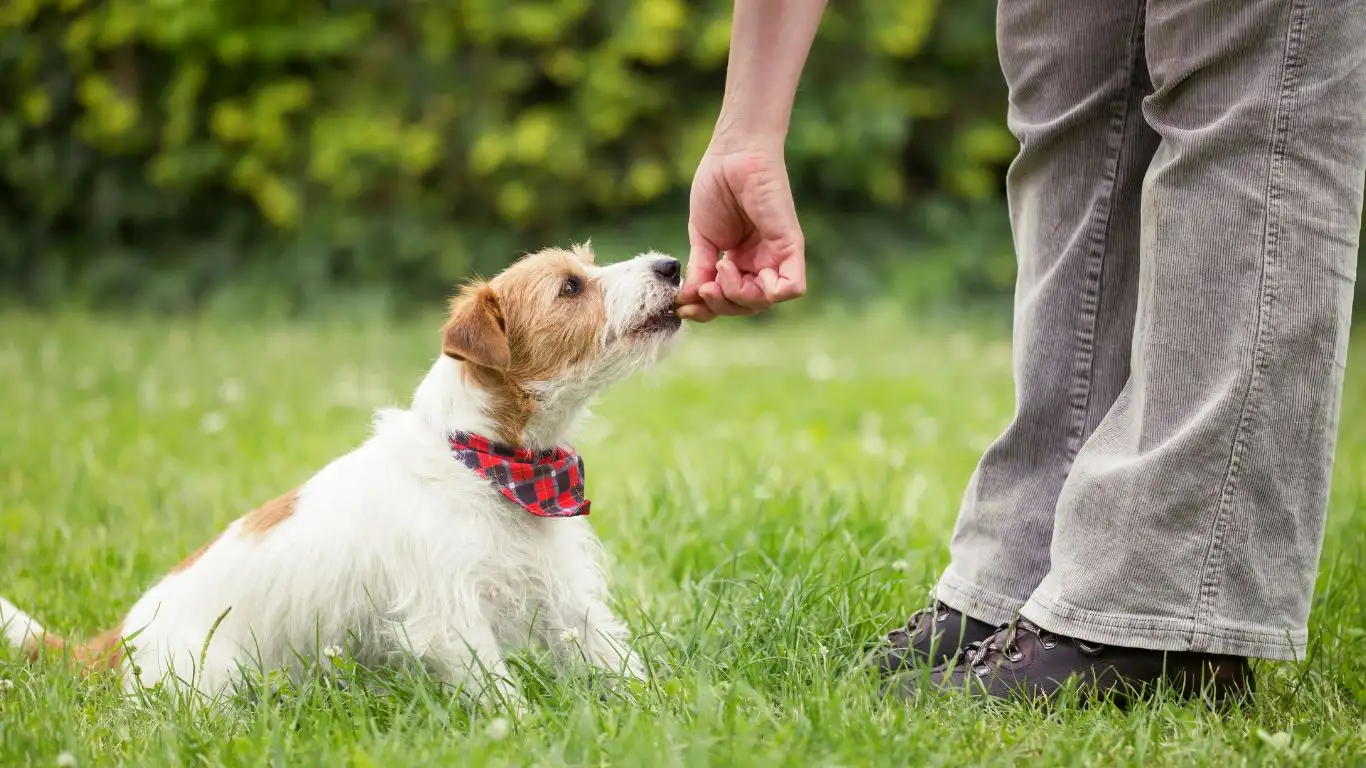
Before we dive into the solution, let’s talk about the “why.” Understanding what’s driving your dog’s behavior makes training a whole lot easier.
It’s in Their Nature
Dogs are scavengers by instinct. Back in their wild ancestors’ days, food wasn’t always available, so they had to grab whatever they could find. Even though your pup gets regular meals, that instinct to forage is still there.
Curiosity (and a Super Sniffer)
Dogs explore the world through their noses. That half-eaten sandwich on the sidewalk? Smells like a five-star meal to them. Their curiosity is what makes them great explorers—but also what gets them into trouble.
Reinforcement: Trash Tastes Good!
Let’s be real—if your dog finds something tasty on the ground once, they’ll remember. Dogs learn by association. If eating garbage was rewarding in the past, they’ll be motivated to keep doing it.
Medical or Nutritional Causes
Sometimes, excessive scavenging can be a sign of something more. Conditions like pica (where dogs crave non-food items) or nutritional deficiencies can play a role. If your dog is obsessively eating things they shouldn’t, a vet visit is a smart idea.
The Dangers of Eating Trash on Walks
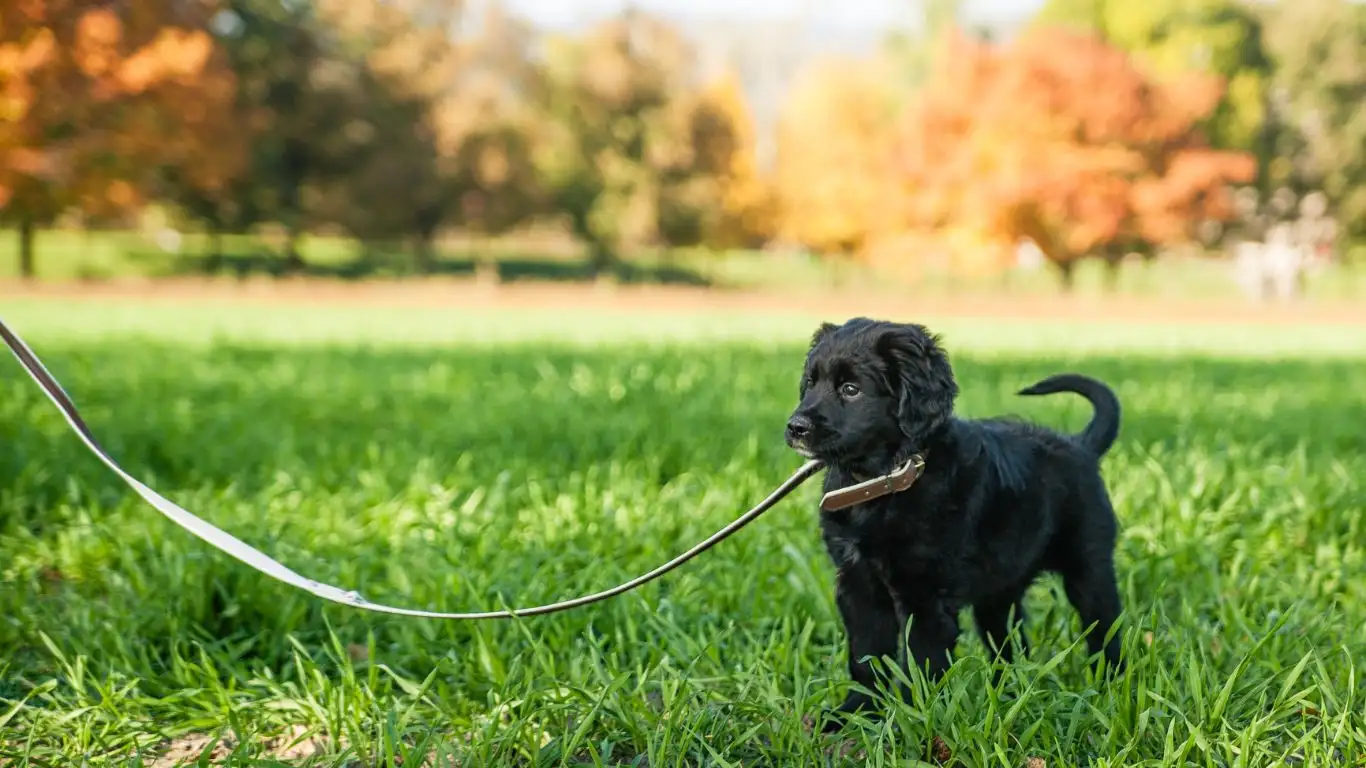
Besides being gross, eating random stuff off the ground can be seriously dangerous. I’ve seen dogs get sick from all sorts of things—rotten food, sharp objects, toxic substances. Here are just a few risks to be aware of:
- Food Poisoning: Spoiled food can cause vomiting, diarrhea, and dehydration.
- Obstructions: Bones, plastic, or other foreign objects can cause life-threatening blockages.
- Toxic Substances: Some things on the ground—like gum with xylitol, chocolate, or certain plants—can be highly toxic to dogs.
- Parasites & Bacteria: Trash isn’t just dirty—it can carry harmful bacteria or parasites that make your dog sick.
Training Basics: Teaching “Leave It” Like a Pro
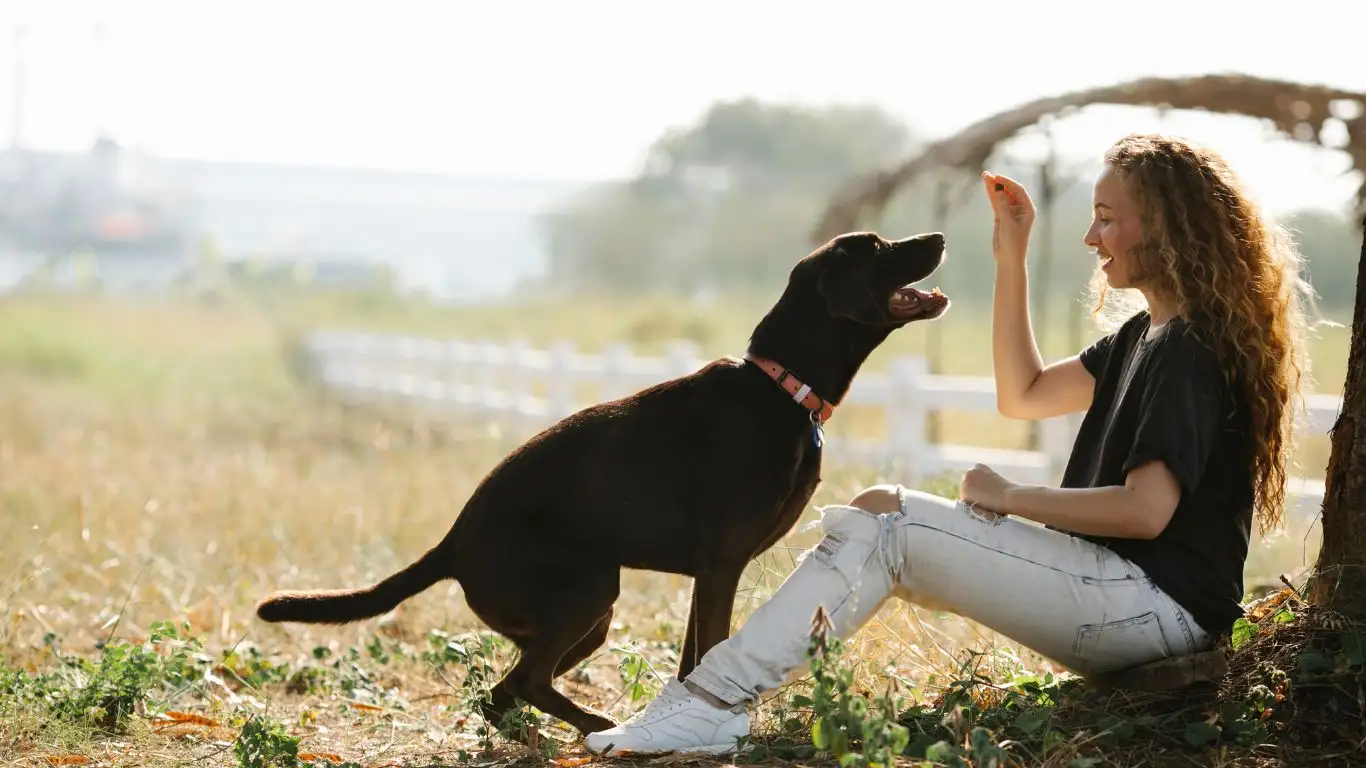
Okay, now that we know why dogs eat trash and the risks involved, let’s get into the training! One of the best commands you can teach your dog is “Leave It”. This command can be a game-changer when you’re out on walks.
Step-by-Step: Teaching “Leave It”
- Start Indoors: Grab some treats and sit in a distraction-free area.
- Present a Treat: Hold a treat in your hand, show it to your dog, and close your fist.
- Wait for a Pause: Your dog will probably sniff, lick, or paw at your hand. The second they back off, say “Yes!” and give them a different treat from your other hand.
- Repeat & Add the Cue: Do this several times, then start saying “Leave it” right before they back away.
- Practice with an Open Hand: Once your dog is getting the idea, try the same exercise with your palm open. Reward only when they resist the temptation.
- Move to the Floor: Place a treat on the ground, cover it with your hand, and repeat the training. Gradually increase difficulty by leaving it uncovered.
Practice daily, and your dog will start to understand that “Leave It” means backing away from whatever they’re eyeing. Once they’ve mastered it indoors, it’s time to take it outside!
Taking “Leave It” to the Streets
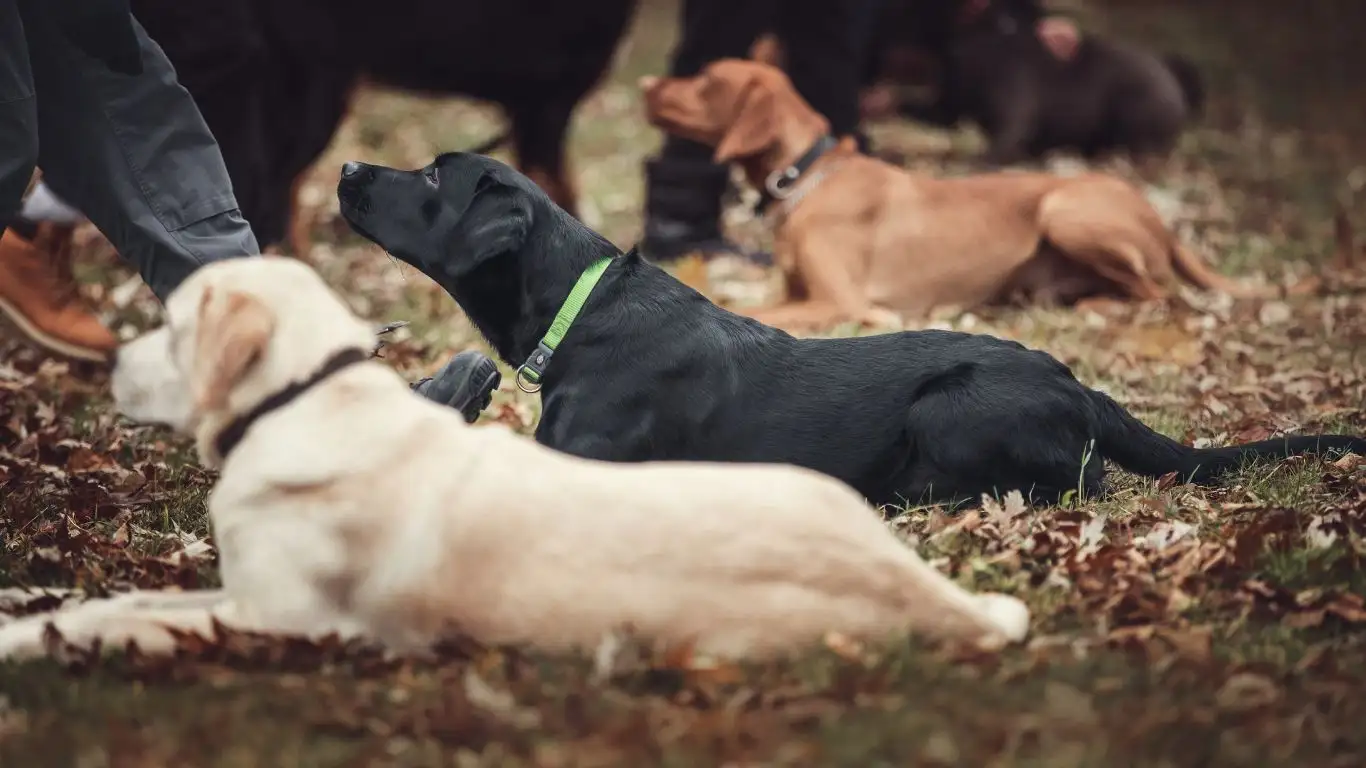
Once your dog has mastered “Leave It” indoors, it’s time to level up—because let’s be honest, the real world is full of temptations. That half-eaten burger on the sidewalk? Way more tempting than a boring old treat at home. So, how do you make sure your dog listens when it really matters? Here’s how to take your training outside.
Step 1: Start in a Low-Distraction Area
Don’t jump straight into a busy street with food scraps everywhere. Begin in your backyard or a quiet park where distractions are minimal. Use the same “Leave It” practice from indoors, but now with leaves, twigs, or harmless objects on the ground.
Step 2: Use a Short Leash for Control
When walking in a public space, keep your dog on a short leash (not a retractable one). This helps you manage their movements and stop them from lunging at trash before you even have time to react.
Step 3: Reward Heavily
Here’s something I always remind my clients: If you want your dog to ignore trash, you have to make it worth their while! Carry high-value treats—think cheese, boiled chicken, or freeze-dried liver. Every time they successfully “Leave It,” reward them with something even better.
Step 4: Create Training Scenarios
Once your dog is doing well in quiet areas, it’s time to introduce controlled challenges. I like to set up fake “trash” traps—things like empty wrappers or bits of food placed on the ground. Walk past them and use “Leave It.” If your dog tries to grab something, gently guide them away and reward them when they ignore it.
Redirecting Focus: The Power of Engagement
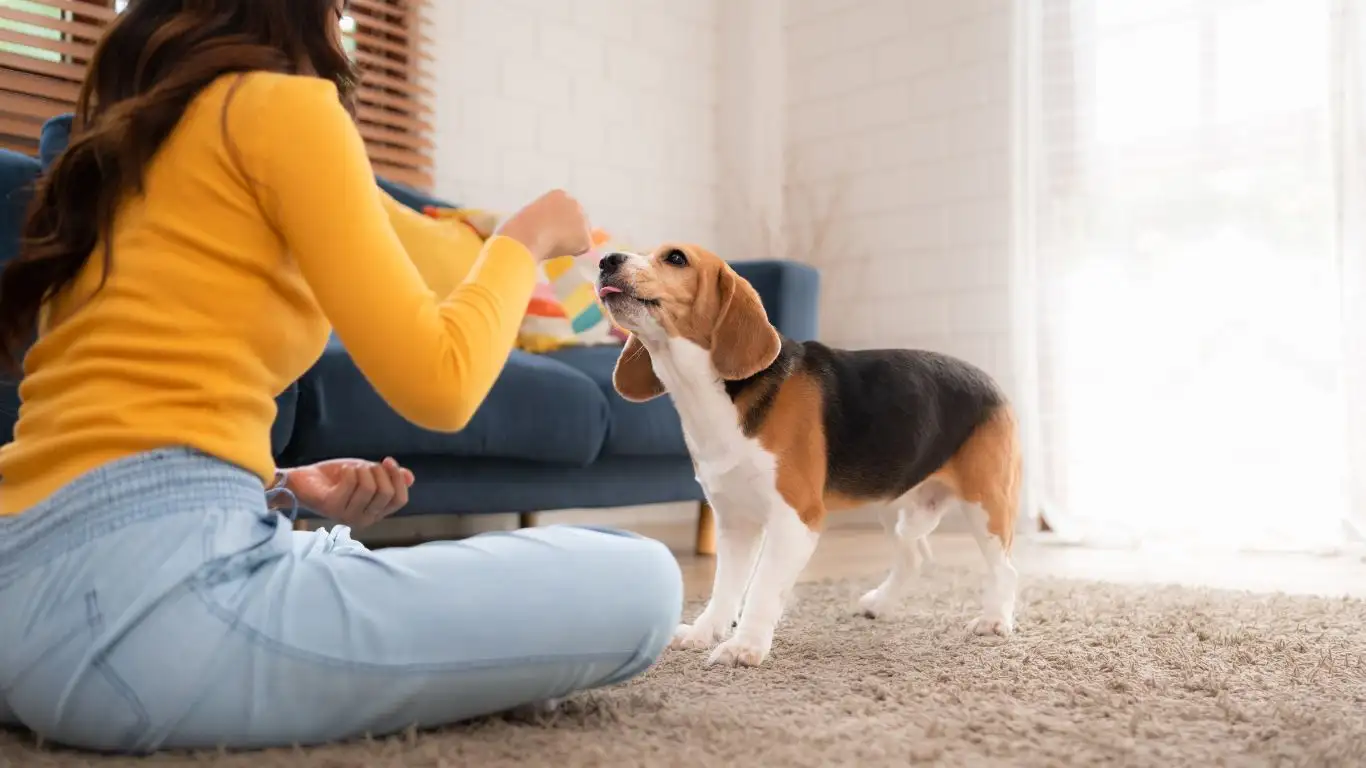
One of the best ways to stop trash-eating behavior? Keep your dog engaged during walks! A distracted dog is less likely to go scavenging.
Teach “Look at Me”
If your dog is focused on you, they’re not focused on the trash. Teach them a solid “Look at Me” command:
- Hold a treat near your face and say “Look at Me.”
- When your dog makes eye contact, reward them.
- Practice until they immediately look at you when asked.
Use this on walks whenever you spot a potential temptation ahead.
Play the “Find It” Game
Dogs love to sniff and search—it’s in their nature. Use that to your advantage by playing the “Find It” game. Toss a small treat into the grass and say “Find It!” This redirects their urge to forage in a safe, controlled way.
Use a Walking Routine
Some dogs scavenge out of boredom. If your walks are predictable and uneventful, they might start looking for their own entertainment (aka eating trash). Mix things up! Change your route, incorporate training exercises, or bring a toy along for engagement.
Management Tools: Set Your Dog Up for Success
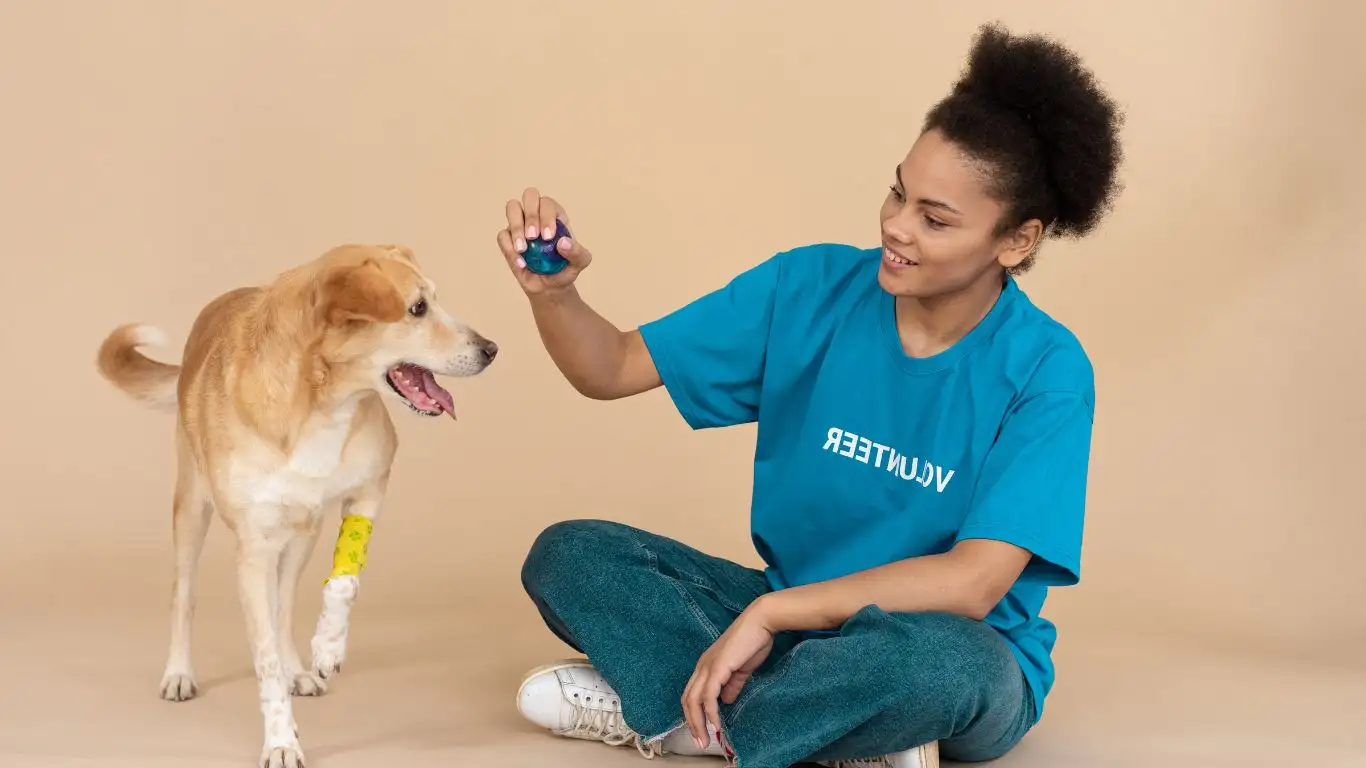
Let’s be real—no training method is foolproof overnight. While working on training, it’s smart to use some management tools to keep your dog from getting into trouble.
Use a Muzzle (If Needed)
A well-fitted basket muzzle can be a game-changer for extreme trash-eaters. Some dogs have such strong scavenging instincts that training alone isn’t enough, and a muzzle prevents them from eating dangerous things while still allowing them to pant and drink water.
Try a Head Halter
For dogs who lunge at every bit of food on the ground, a head halter (like a Gentle Leader) gives you more control over their movement. With a halter, you can gently guide their head away from temptations before they even get close.
Walk in Cleaner Areas
If your usual walking route is littered with food scraps, consider finding a cleaner area. Parks, trails, or quiet residential streets are often better options than busy sidewalks.
Training takes time, but with consistency, patience, and the right techniques, you can teach your dog to walk past trash like a pro. Stick with it, and soon your pup will be focused on you—not on street snacks!
Common Mistakes & How to Avoid Them
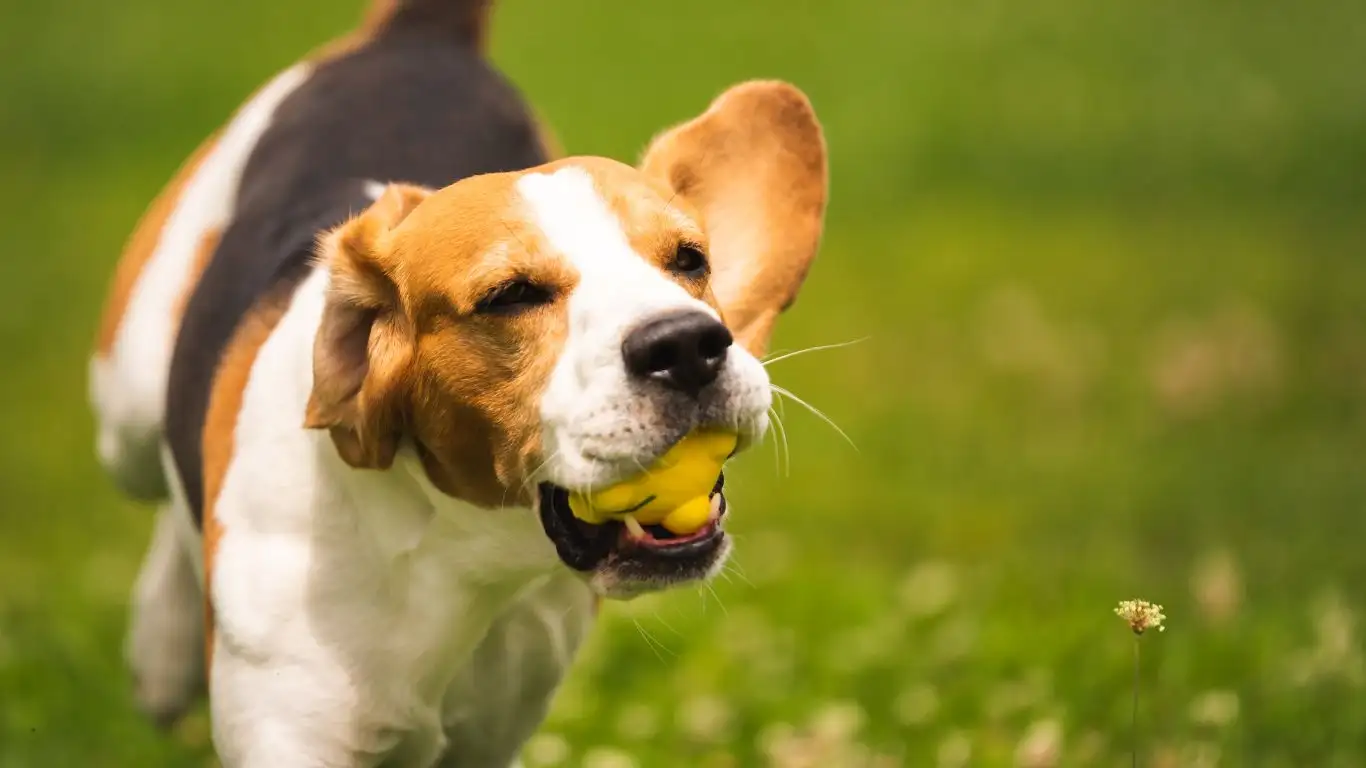
By now, you’ve got a solid game plan for how to train a dog to stop eating trash on walks. But even with the best intentions, it’s easy to make mistakes that slow progress. Let’s go over some common training pitfalls and how to avoid them.
1. Inconsistent Reinforcement
If you only correct your dog sometimes but let them sneak a bite other times, they’ll stay confused. Dogs thrive on consistency, so make sure every walk follows the same rules.
2. Using the Wrong Rewards
If your dog ignores your treats in favor of trash, it’s time to level up your reward game. Try using higher-value treats like fresh chicken, cheese, or freeze-dried liver. If your dog prefers toys or praise, use those instead!
3. Reacting Too Late
By the time your dog has something in their mouth, you’re already playing catch-up. Instead, be proactive—spot potential trash ahead of time and use your training cues before your dog makes a move.
4. Getting Frustrated
Training takes time, and some dogs take longer to learn than others. If your dog isn’t getting it right away, take a deep breath and stay patient. Every small success adds up!
When to Seek Professional Help
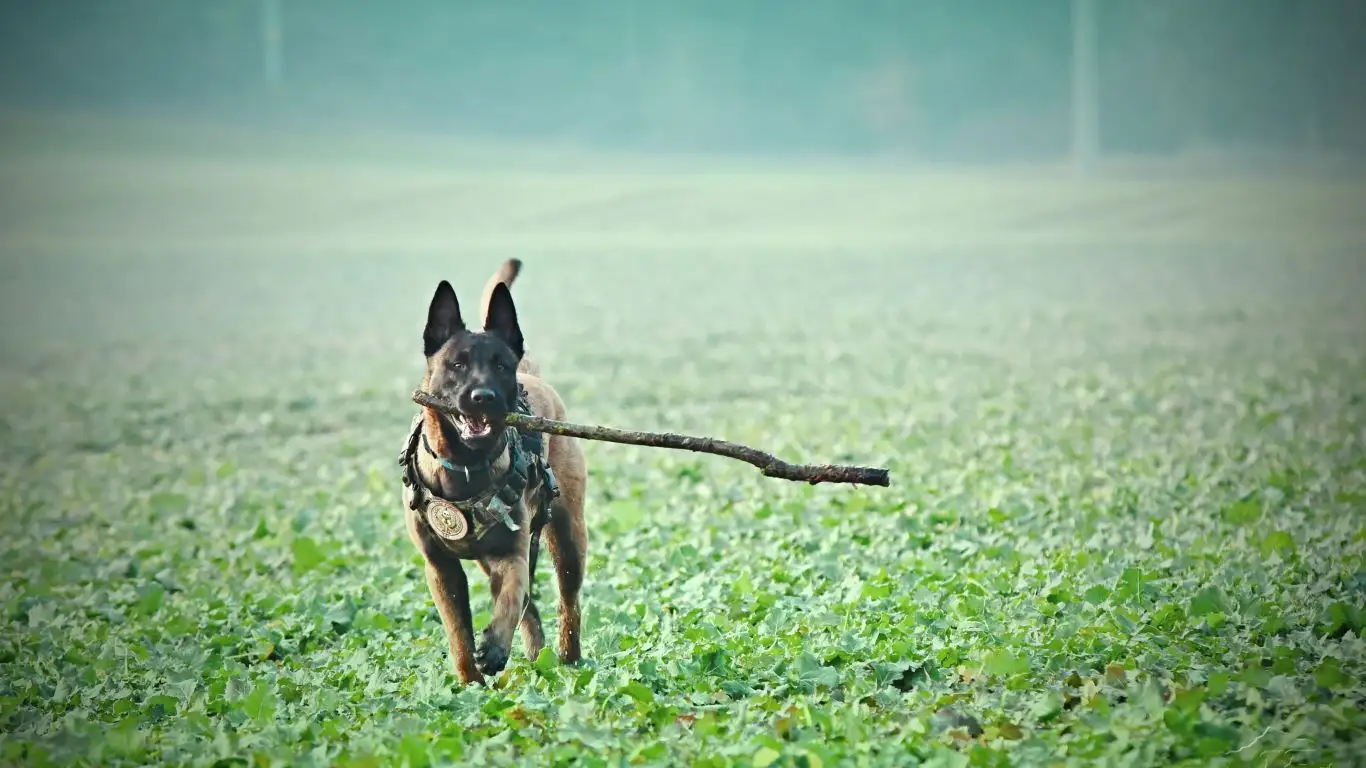
Sometimes, despite your best efforts, a dog’s scavenging habit is too strong to handle alone. If your dog’s behavior is extreme—constantly pulling toward trash, ignoring training, or even growling when you try to intervene—it might be time to call in a professional.
As a Certified Professional Dog Trainer (CPDT-KA), I’ve worked with dogs who needed extra guidance. A professional can assess your dog’s specific needs, tweak your training approach, and provide hands-on coaching. In some cases, a veterinary behaviorist may be needed if the scavenging is linked to anxiety or a medical condition.
Final Thoughts
Stopping your dog from eating trash on walks isn’t about being the “fun police”—it’s about keeping them safe and healthy. With consistent training, proper management, and plenty of positive reinforcement, your dog can learn to ignore those tempting street snacks.
Remember, the key to success is:
- Understanding why your dog scavenges.
- Using structured training techniques like “Leave It” and “Look at Me.”
- Keeping walks engaging to prevent boredom.
- Using tools like leashes, head halters, or muzzles when necessary.
- Being patient and celebrating progress, no matter how small!
So, next time you’re out on a walk, take a deep breath, grab your treats, and start practicing. Your dog will thank you—maybe not right away, but trust me, they will.
References
- American Kennel Club (AKC) – Training and behavior resources
- Certification Council for Professional Dog Trainers – Find certified trainers
- VCA Animal Hospitals – Canine nutrition and health
Disclaimer
This article is for informational purposes only and does not replace professional veterinary or behavioral advice. If your dog’s scavenging is extreme or linked to health concerns, consult your veterinarian or a certified dog trainer.
